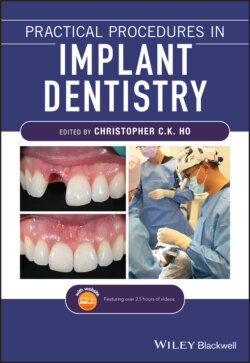Читать книгу Practical Procedures in Implant Dentistry - Группа авторов - Страница 54
6.2 Procedures
ОглавлениеBegin the patient assessment with some light conversation with your patient comfortably seated in the dental chair. Discuss the patient's chief complaint and motivations for seeking treatment. Observe the functionality of the muscles of facial expression during your exchange, being sure to note any perceived abnormalities as well as the patient's smile dynamics and dentofacial aesthetics.
Initiate the clinical exam by confirming the presence of typical anatomical features by performing a thorough extraoral and intraoral examination, further investigating any deviation from normal. Assess the stability of the temporomandibular joint, checking for repeatability of occlusion and an absence of pain upon loading the temporomandibular joint. Be sure to palpate the muscles of mastication and associated local lymph nodes, checking for any swelling or tenderness. Additionally, record the patient's maximum pain‐free opening, assessing the range of motion and determining if there is sufficient room for any required surgical instrumentation and access.
Once this has been completed, begin your focused exam pertaining to the patient's chief complaint. Identify local or regional anatomical structures that may become involved in the course of surgical or prosthetic treatment being planned for the individual. Consider appropriate pain management techniques for the planned surgery via delivery of local anaesthetic to the local innervation. Carefully plan any incisions required for surgical access with respect to any local vital structures.
